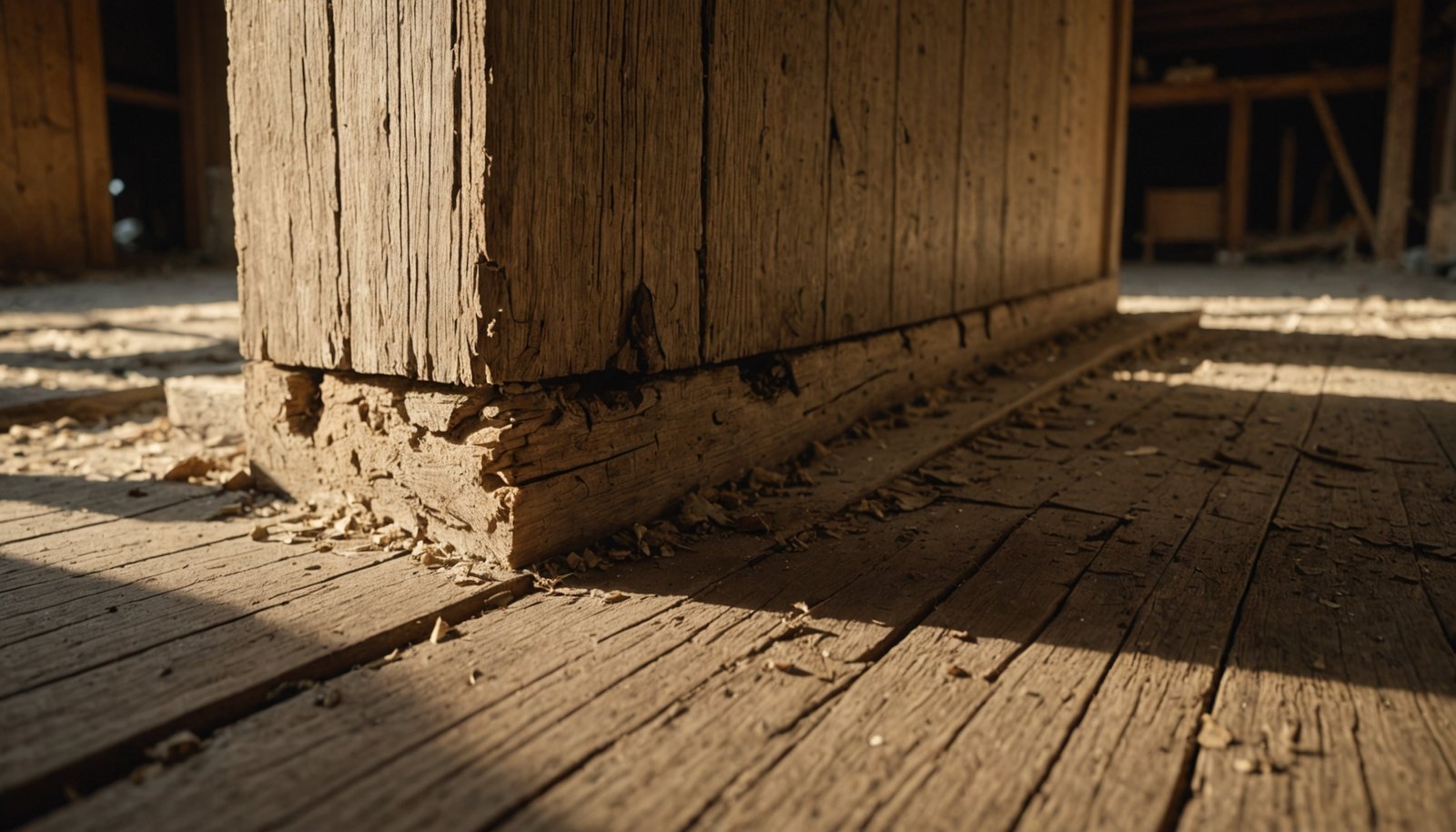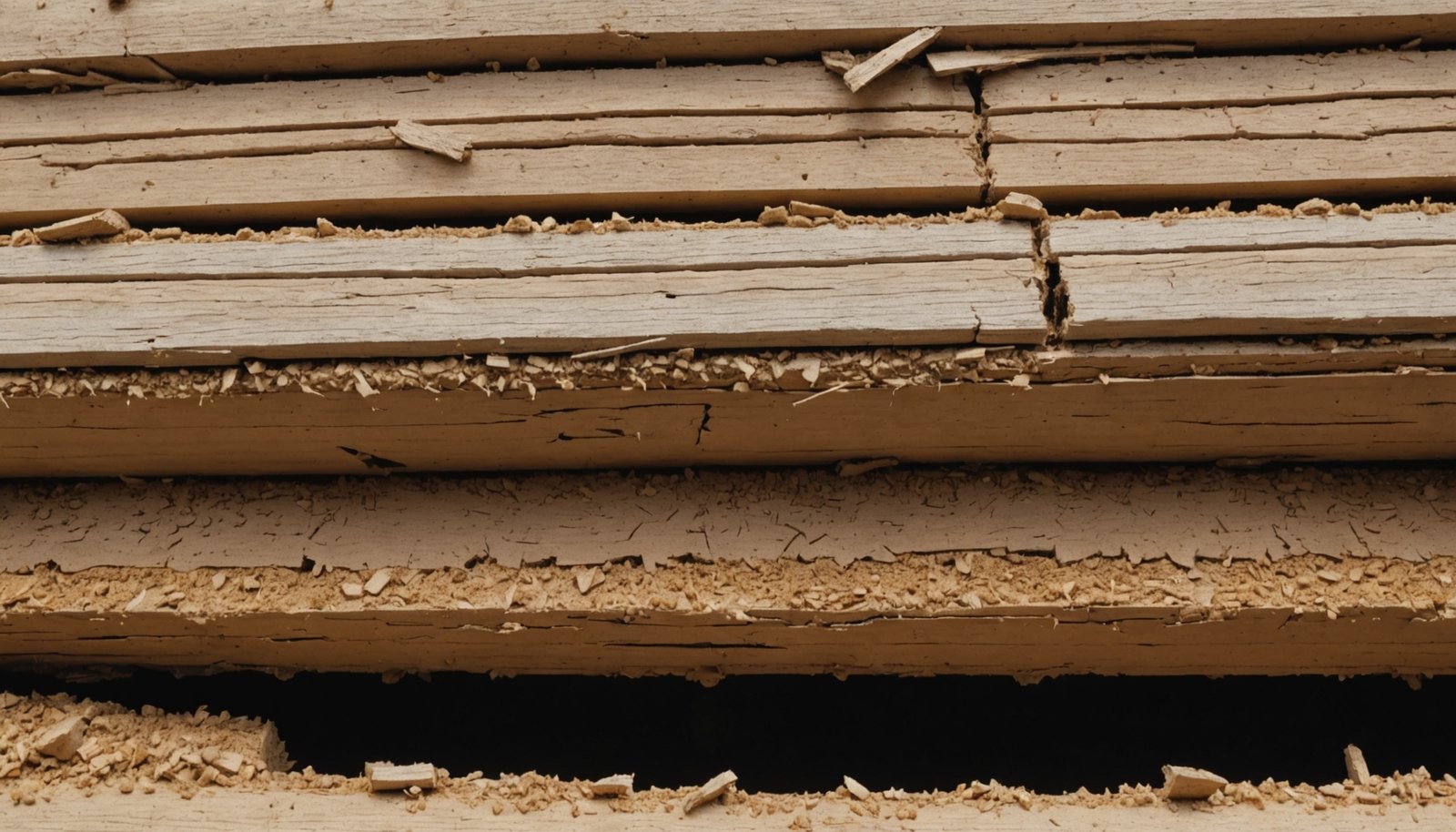Does Home Insurance Cover Termite Damage?
Your standard homeowners insurance won’t cover termite damage because insurers consider it preventable through routine maintenance rather than a sudden, accidental event. While direct termite damage isn’t covered, you might have coverage for secondary issues like structural collapse or electrical problems caused by termite activity. To protect your home, you’ll need to focus on prevention through regular inspections and maintenance. There’s much more to know about protecting your investment from these destructive pests.
Key Takeaways
- Standard homeowners insurance policies typically exclude termite damage because it’s considered gradual and preventable through regular maintenance.
- While direct termite damage isn’t covered, secondary damages like structural collapse or electrical accidents may qualify for insurance coverage.
- Insurance companies expect homeowners to prevent termite infestations through routine inspections and proper home maintenance.
- Specialized pest control policies are available as alternatives to standard homeowners insurance for termite-related coverage.
- Regular inspections cost $100-$300, while extensive termite treatments range from $500-$2,500, making prevention financially crucial.
Understanding Basic Home Insurance Coverage

When it comes to protecting your home, understanding what your insurance policy covers is essential. Homeowners insurance policies provide coverage for various types of damage, but you’ll find that termite infestation isn’t typically included in standard coverage.
Insurance companies typically view termite damage as preventable through regular maintenance and inspections. Your policy will generally cover sudden, accidental events like fires or theft, but it specifically excludes damage caused by pests. This means you’re responsible for taking steps to prevent termite infestations and managing any damage that occurs.
You’ll need to carefully review your policy’s terms and conditions, as most insurance agreements explicitly state their exclusions for pest-related issues.
To protect your home from termites, you may want to reflect on additional coverage options or specialized pest control services.
Why Termite Damage Is Usually Excluded

Your homeowner’s insurance won’t cover termite damage because it’s considered a preventable issue that you can detect and treat through regular property maintenance.
Since termites typically cause damage over several years rather than through sudden events, insurers view this as a gradual deterioration that falls outside standard coverage parameters.
You’re expected to protect your home through routine inspections and preventive measures, making termite control your responsibility rather than an insurance matter.
Preventable Nature of Infestations
Insurance companies exclude termite damage from standard policies because homeowners can prevent these infestations through proper maintenance and monitoring.
Since termites take 3-5 years to cause significant damage, you have sufficient time to detect and address potential problems before they become severe.
Your role in preventing termite damage is vital, which is why it’s not covered by your standard insurance policy. You can protect your home by scheduling regular pest inspections and maintaining proper moisture control.
While termite damage often remains hidden until it’s extensive, you have multiple opportunities to catch these issues early through proactive detection methods.
Taking preventive measures is far more cost-effective than dealing with extensive structural damage that your insurance won’t cover.
Gradual Damage Not Covered
Because termite damage occurs gradually over time, standard homeowners policies don’t cover the resulting destruction.
Insurance companies view termite infestations as preventable issues that fall under your regular home maintenance responsibilities, not sudden catastrophic events.
Here’s why insurers classify termite damage as a gradual issue that warrants exclusions:
- Infestations typically develop over months or years, allowing time for detection through routine inspections.
- The damage progresses slowly enough that you can spot warning signs before severe structural problems occur.
- Preventable conditions, like moisture problems and wood-to-ground contact, contribute to termite attraction.
Your homeowners insurance covers sudden, unexpected events, but termite-related destruction is considered a long-term maintenance issue you can prevent through proper care and regular pest inspections.
Regular Maintenance Required
Since maintaining a home requires ongoing vigilance, insurers place the responsibility of termite prevention squarely on homeowners’ shoulders. They expect you to perform regular maintenance and take preventative measures to protect your property from these destructive pests.
To prevent termite problems, you’ll need to schedule routine inspections and address any signs of infestation as soon as you notice them.
Insurance companies view termite damage as a gradual issue that develops over time, not a sudden event like a fire or storm. That’s why they consider it preventable through proper upkeep.
You’re responsible for maintaining your home’s structural integrity by conducting periodic inspections, implementing preventative treatments, and addressing moisture issues that could attract termites to your property.
When Insurance Might Cover Termite-Related Issues

While most homeowners assume termite damage isn’t covered under any circumstances, there are specific scenarios where your insurance policy might step in.
Insurance companies consider termite damage a maintenance issue, but secondary damage from termite-related incidents could qualify as a covered peril.
While insurers won’t pay for termite control, they may cover secondary damages that occur as a result of termite infestation.
Here’s when your home insurance might cover termite-related situations:
- When termite damage leads to a sudden structural collapse that causes other covered damages
- If weakened wood structures from termites result in a fire, your fire coverage would apply
- When termite-compromised electrical systems cause unexpected accidents or damages
It’s essential to document any termite activity and resulting damage thoroughly.
While you’re responsible for termite treatment and direct repairs, maintaining detailed records helps support potential claims for secondary damages your policy covers.
Essential Prevention and Maintenance Tips
You’ll protect your home against termite infestations by monitoring moisture levels in crawl spaces, basements, and around your foundation.
It’s crucial to repair leaky pipes, fix dripping faucets, and maintain proper drainage to create an environment that’s less attractive to these destructive pests.
Make sure you seal all potential entry points around your home’s foundation, walls, and utility penetrations with appropriate materials to create an effective barrier against termite intrusion.
Monitor Moisture Levels Regularly
Because termites thrive in damp conditions, monitoring your home’s moisture levels is crucial for preventing infestations.
Since homeowners insurance won’t cover termite damage, you’ll need to take proactive steps to prevent water accumulation and maintain ideal humidity levels between 30-50%.
- Use a moisture meter to regularly check high-risk areas like basements, crawl spaces, and areas around plumbing fixtures.
- Inspect and repair any leaks in your roof, pipes, or foundation before they create conditions that attract termites.
- Guarantee proper drainage by directing downspouts away from your home’s foundation and maintaining adequate ventilation in attics and crawl spaces.
Seal Entry Points Today
With termites able to squeeze through the tiniest openings, sealing potential entry points is one of the most critical steps in protecting your home from infestation.
Since most insurance policies don’t cover termite damage, it’s crucial to take preventive action now.
Start by inspecting your home’s exterior for gaps around doors, windows, and foundation cracks. Use quality caulk or foam sealants to close these openings, and don’t forget to check and repair weather stripping regularly.
Install screens on vents to maintain proper airflow while keeping termites out.
To reduce the risk of infestation, keep your home’s perimeter clear and accessible. This makes it easier to spot and seal new entry points before termites can establish colonies, saving you from costly repairs that insurance won’t cover.
Recognizing Signs of Termite Infestation
Early detection of termite activity can save homeowners thousands of dollars in repair costs and prevent structural damage to their homes.
To protect your investment, you’ll need to recognize clear signs of termite infestation before the damage becomes severe.
Watch for these key indicators of termite activity in your home:
- Mud tubes running along your foundation and walls – these pencil-sized tunnels serve as termite highways.
- Discarded wings near windows and doorways, signaling that swarming termites have established a new colony.
- Hollow-sounding or easily crumbling wood, coupled with buckling floors or sagging ceilings, which indicate extensive feeding damage.
Regular inspections are essential since most insurance policies don’t cover termite damage.
Cost Implications of Termite Control and Repairs
Understanding the financial impact of termite control and repairs can help you make informed decisions about protecting your home. The cost of termite damage can quickly escalate from a few hundred to tens of thousands of dollars if left untreated.
Since your insurance company typically won’t cover termite-related issues, you’ll need to budget for both prevention and treatment.
You can invest in routine maintenance through regular pest control inspections, which cost between $100 to $300. While extensive termite treatments may range from $500 to $2,500, they’re far less expensive than major structural repairs.
Consider implementing preventative measures, such as using termite-resistant materials, to minimize future expenses. By prioritizing early detection and prevention, you’ll protect both your home and your wallet from devastating termite damage.
Alternative Protection Options for Homeowners
Since standard homeowners insurance doesn’t cover termite damage, you’ll need to explore alternative protection options to safeguard your investment.
You can strengthen your home’s defense against termites through several strategic approaches that combine insurance and preventative measures.
Consider these key protection strategies:
- Purchase a specialized pest control policy or endorsement that covers termite treatments and resulting damage.
- Schedule regular pest inspections with certified professionals to catch infestations early and minimize repair costs.
- Invest in preventative treatments like termite barriers or baiting systems, which may qualify you for insurance discounts.
Many insurance providers now offer bundled packages that include pest control services.
It’s worth discussing specific insurance riders with your agent to make certain you have thorough coverage against termite-related damages.
Conclusion
While your standard home insurance won’t cover termite damage, you’ve got options to protect your investment. Consider getting a separate termite bond or warranty, maintain regular inspections, and stay vigilant for early warning signs. Remember, prevention is always cheaper than repair. Taking proactive steps today can save you thousands in potential termite-related damages and keep your home structurally sound for years to come.

